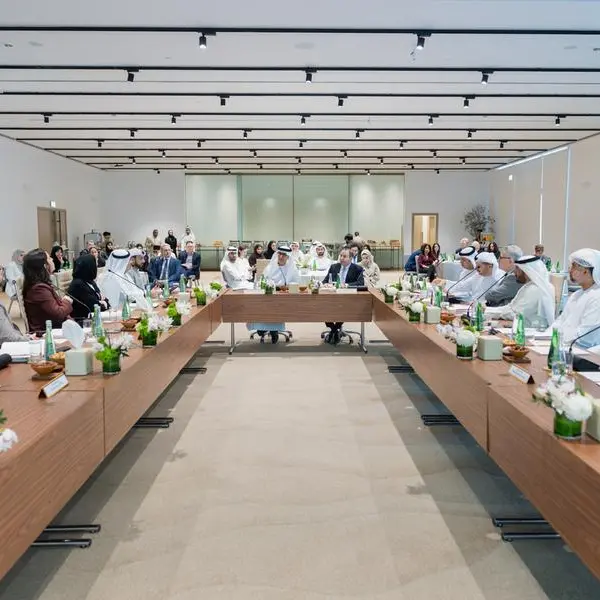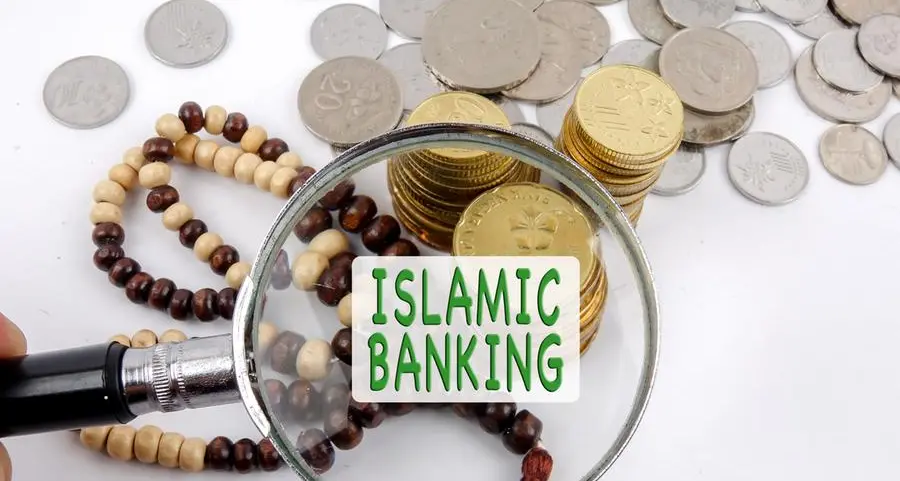- Thirteen elements of Saudi cuisine were listed in the Ark of Taste Archives, an international catalogue of endangered foods managed by the Slow Food movement.
- Following the announcement in June, the Saudi region of Aseer will be officially awarded ‘World Region of Gastronomy 2024’.
Turin, Italy – The Saudi Culinary Arts Commission is hosting a pavilion at the Terra Madre Network conference in Turin, Italy, to showcase some of the Kingdom’s unique dishes and indigenous food crops.
At the conference, thirteen elements of Saudi cuisine were added to the Ark of Taste Archives, an international catalogue of endangered heritage foods managed by the Slow Food movement. This follows the signing of a Memorandum of Understanding (MoU) between the Culinary Arts Commission and Slow Food to support the Kingdom’s burgeoning culinary sector, including the involvement of Saudi farmers’ markets in the Global Slow Food Earth Market list, and the identification of further opportunities for cooperation.
Slow Food is a global movement that operates in over 160 countries with the aim of preserving and increasing awareness of endangered foods that are unique in taste and native to a certain region. Some of the Saudi foods that were listed in the Ark of Taste include Al-Hassawi Rice, which is considered one of the most expensive types of rice and it's native to Saudi Arabia’s Eastern Province; Al-Samh Seeds, native to Al-Jouf Province; the distinct white desert truffles of the Northern Region called Al-Kamaa; and Saudi Khawlani Coffee Beans from Jazan Region, which are among the finest coffee beans in the world.
The conference will also see the region of Aseer in Saudi Arabia formally awarded the title of ‘World Region of Gastronomy 2024’ by the International Institute of Gastronomy, Culture, Arts, and Tourism (IGCAT). The international jury of IGCAT experts recognized the welcoming spirit of the Aseer community and their genuine willingness to showcase and share their food and culture. The jury commented: “The light of the Middle East shines from the region of Aseer. A lot of work has been done to empower the community and prepare them for welcoming future visitors to their unique culture. The culinary scene of Aseer is rooted in tradition and it has the potential to become a culinary destination and contribute to the creative economy.”
Ms. Mayada Badr, CEO of the Culinary Arts Commission, said, “The Culinary Arts Commission’s attendance at this event is a culmination of the work by dedicated producers around the Kingdom to elevate our culinary sector. We're delighted to be able to showcase the very best of Saudi Arabian cuisine here at Terra Madre, and we hope audiences will enjoy sampling some of our unique and delicious dishes.
“Saudi Arabia has a diverse culture and a rich heritage, and we are proud that the Aseer region has been formally awarded ‘World Region of Gastronomy 2024’, in recognition of their efforts to preserve the region's diverse and distinctive food culture r, while protecting the environment and empowering younger generations.”
The participation of the Culinary Arts Commission at Terra Madre is part of broader efforts to stimulate cultural exchange and dialogue with counterparts around the world while introducing the Kingdom’s diverse culinary heritage and native agricultural crops to the world. Some of the activities at the Saudi pavilion include cooking demonstrations, a welcome area where guests can try Saudi coffee and sweets, a restaurant area serving Saudi food, and an exhibition showcasing food from the Kingdom’s 13 regions.
Terra Madre is a network of food communities that holds a major conference every two years in Turin, Italy, to foster discussion and present innovative concepts on food, globalization, and economics. The conference aims to connect producers from across the food supply chain to encourage collaboration and improve their skills for a more developed global food system.
The full list of Saudi cuisine elements that were listed in the Ark of Taste Archives:
- Al-Hellya Date: These dates come from the old palm trees of Madinah, which were previously planted on all farms, but are now considered a rare species. The growth of Al-Hellya Dates is a sign that the date season has begun, as it is one of the first types of dates to be harvested.
- Red Camel: Found mainly in the Hail Region, red camels are known for their medium size and low milk production. The meat of the Red Camel is used in rice and meat dishes that are served when receiving an important guest or on joyous occasions such as weddings and celebrations.
- Melh Al-Qasab: Mainly located in Al-Qasab city in the Riyadh Region, this salt is harvested by evaporating salty seawater. This evaporation results in mineral salt deposits that form huge salt rocks. Traditional methods are still used to extract it; the ground is excavated until a pond of water appears, which is then left for several days until the water evaporates and salt is deposited.
- Al-Samh Seeds: Al-Samh plant is a perennial ground cover that grows due to rainfall in the Bisata region of Al-Jouf. This plant contains a level of salinity that protects it from rodents as well as sheep and other grazing animals. The tough outer layer that covers the small seeds helps preserve them for decades.
- Al-Kadi: Al-Kadi is one of the historic perennial trees of the ancient village of Dhi Ain in Al Makhwah Governorate, 40 km southwest from the Al Baha Region. Al-Kadi tree ranges from 1 to 5 meters high. It is pollinated by wind and sometimes by insects. From the same seed, an oil known as “Kadi oil” is extracted, which is one of the best essential oils, as well as “Kadi water,” which is used to add flavor to drinks and for making perfumes and cosmetics.
- Saudi Khawlani Coffee Beans: This coffee bean grows in Jizan Region and it was named after the ancient tribes of Khawlan who lived in the south of the Arabian Peninsula. They are green in color and have a distinctive smell. The two important sources of Khawlani coffee are Saudi Arabia and Yemen.
- Moringa Trees: Moringa is a desert mountain tree that does not need large amounts of water. It grows in the Tabuk Region and is distinguished by its beautiful, dense, pink flowers. Its seeds are used for medicinal purposes and contain many fatty acids. The oil in its seeds account for up to 54% of the fruit's weight.
- Al-Bur Al-Najrani (Al-Samraa) This type of wheat grows in the Governorate of Najran. It is planted in the winter, and crops are harvested in the summer. Al-Bur Al-Najrani is used as the main ingredient in many traditional dishes in Saudi Arabia.
- Al-Mghami Dates: Al-Mghami Dates is a traditional dish from the Al-Qassim Governorate that is made of dates, date molasses, and sesame seeds.
- Al-Kamaa (White Desert Truffle): Al-Kamaa White Desert Truffle is It is a type of mushroom that has a spherical shape and soft texture. Its color ranges from white and brown, are found in the northern region of Saudi Arabia.
- Al-Hassawi Rice: Al-Hassawi Rice is one of the most expensive varieties of rice. It is cultivated in Al-Ahsa Region as it requires a high temperature of more than 50 °C and a large amount of water for the land to be suitable for cultivation.
- Sidr Honey: The Sidr Honey comes from the Sidr tree, Ziziphus Spina-Christi. This thorny tree is a type of acacia that can reach 12 meters tall and grows in the Aseer Region, southwest of Saudi Arabia. Sidr Honey is known for its delightful aroma and heavenly taste.
- Al-Kabath (Salvadora persica tree): A fruit of the Arak plant, which is an evergreen perennial desert plant historically known in the north and south of the Makkah Province. It is used for herding sheep and camels. This plan is very limited in quantity, because it grown in the wild and not cultivated in farms.
-Ends-
About the Culinary Arts Commission:
The Saudi Culinary Arts Commission is leading the development of the Kingdom’s culinary arts sector. By driving investment and building robust regulatory frameworks, the Commission is supporting the next generation of Saudi chefs and hospitality professionals as they aspire to reach their full potential. Together with the Ministry of Culture, the Commission is working to unlock a thriving cultural sector to preserve and elevate the culinary related traditions that make the Kingdom unique. To learn more about the Saudi Culinary Arts Commission, please visit https://culinary.moc.gov.sa/en and the Commission’s official social media accounts on Instagram @mocculinary and Twitter @MOCCulinary



















